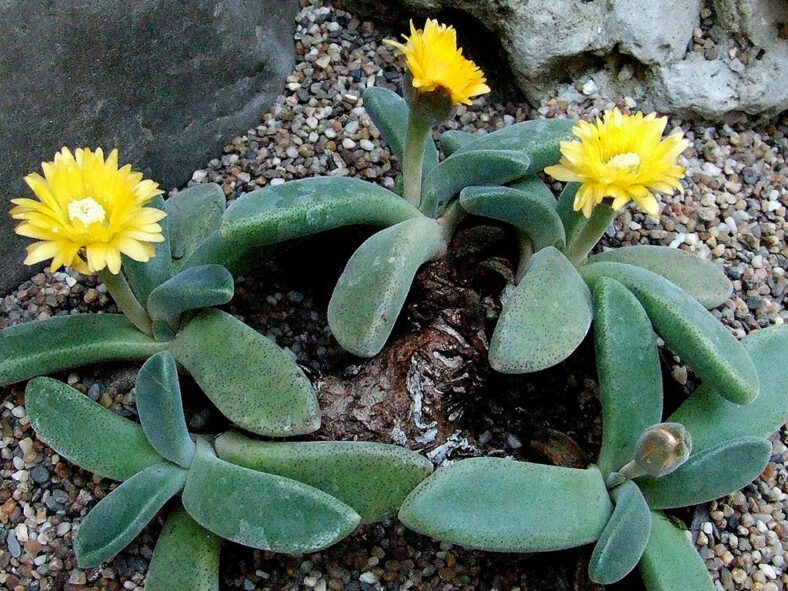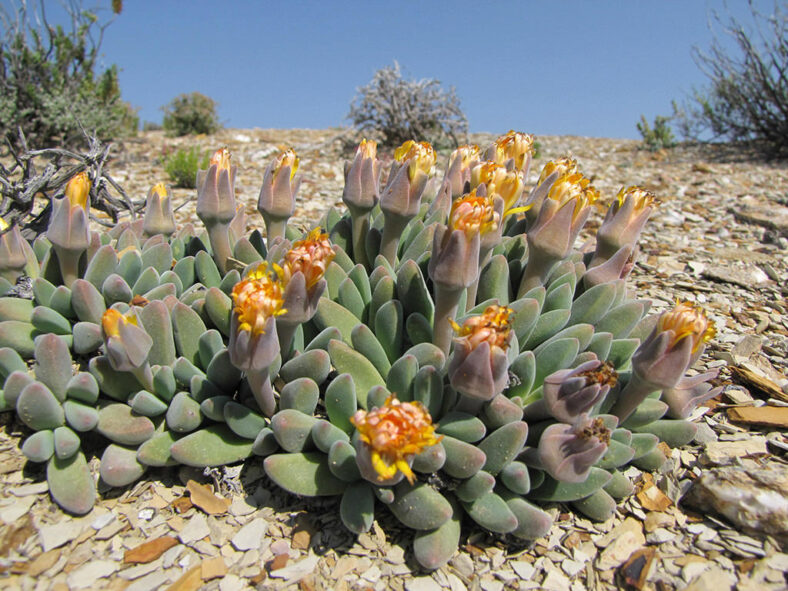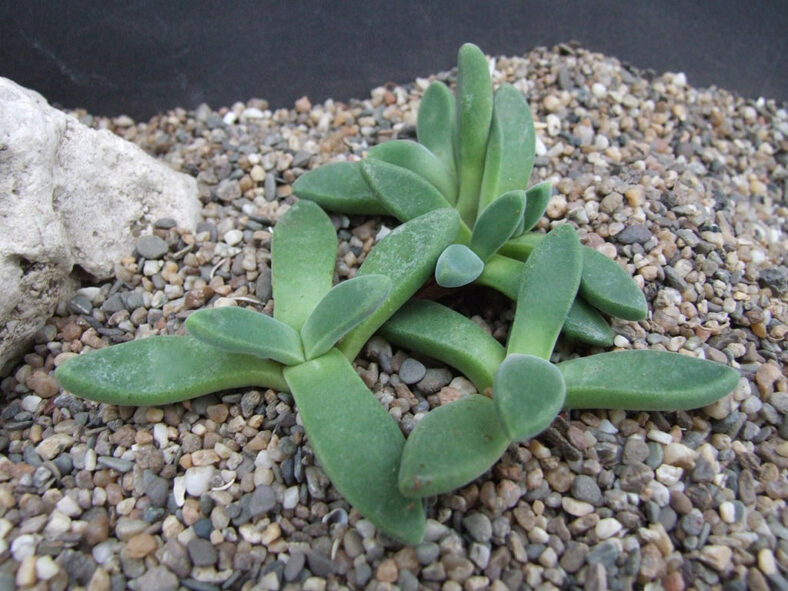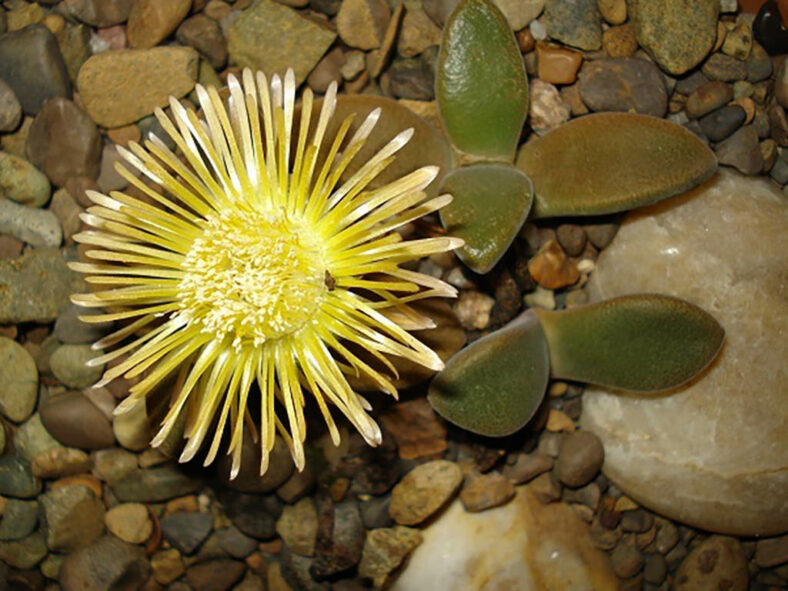Deilanthe peersii is similar to Deilanthe thudichumii, but their flowers have different opening times. Deilanthe peersii has nocturnal flowers opening between 6 p.m. and 2 a.m., whereas Deilanthe thudichumii has diurnal flowers opening between 3 p.m. and 6 p.m.
Scientific Name
Deilanthe peersii (L.Bolus) N.E.Br.
Synonym(s)
Aloinopsis peersii, Cheiridopsis peersii, Nananthus peersii
Scientific Classification
Family: Aizoaceae
Subfamily: Ruschioideae
Tribe: Ruschieae
Genus: Deilanthe
Etymology
The specific epithet "peersii" (pronounced PEERS-ee-eye) honors Victor Stanley Peers (1874-1940), an Australian botanist, plant collector, and amateur archeologist.
Origin
Aloinopsis villetii is native to South Africa. It grows on shale gravel, silt, or quartz pebbles in the Western Cape, Eastern Cape, and Free State provinces.
Description
Deilanthe peersii, also known as Aloinopsis peersii, is a compact, dwarf succulent with fleshy, turnip-shaped roots and thick, velvety leaves arranged in rosettes. The leaves are oval or elliptic, broader than thick, measuring up to 1.4 inches (3.5 cm) long and 0.5 inches (1.3 cm) wide. They range in color from gray-green to pearly grey or brownish.
During spring, Deilanthe peersii produces solitary flowers that can reach a diameter of 1 inch (2.5 cm). The nocturnal flowers have numerous narrow petals that are yellow with copper or reddish tips or sometimes reddish-yellow. The fruits are 10- to 14-locular capsules with small closing bodies.

How to Grow and Care for Deilanthe peersii
Light: This succulent requires bright light but not too much direct sunlight. So, a windowsill that receives 4 to 5 hours of direct sunlight in the morning and partial shade in the afternoon will be a perfect spot for indoor growing.
Soil: Deilanthe peersii thrives in porous soil, allowing the water to drain away quickly. Thus, use commercial soil for succulents or make your own well-draining mix.
Temperature: High temperatures are not a problem as long as there is plenty of fresh air, and the plant can survive mild frost if kept dry. It grows best in USDA Plant Hardiness Zones 9a to 11b, with average minimum winter temperatures ranging from 20 to 50 °F (-6.7 to 10 °C).
Watering: To keep your plant healthy, it is most important to know when, how much, and how often to water. During the dormant period, usually in summer, Deilanthe peersii requires little or no water. In the fall, once it grows again, water thoroughly but allow the soil to dry between waterings.
Fertilizing: As long as you repot this plant every two years, it does not need fertilizer.
Repotting: Even if it can stay happy in the same pot for years, once in a while, you can repot your plant to give it more space anytime during the growing season. However, the best time is at the beginning of the growing season.
Propagation: Although usually started from seeds, Deilanthe peersii can be easily propagated by division. Late summer, just before it begins to break dormancy, is the best time to divide the plant, while fall is ideal for sowing the seeds.
Learn more at How to Grow and Care for Aloinopsis.
Toxicity of Deilanthe peersii
Deilanthe peersii is considered non-toxic, so having it around kids and pets is safe.
Links
- Back to genus Deilanthe
- Succupedia: Browse succulents by Scientific Name, Common Name, Genus, Family, USDA Hardiness Zone, Origin, or cacti by Genus
Photo Gallery
Click on a photo to see a larger version.


